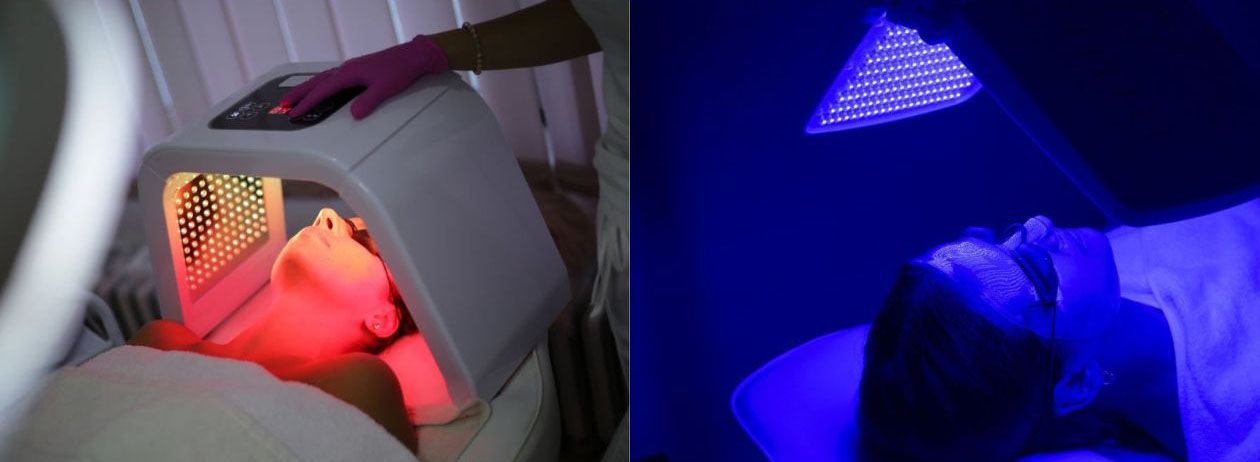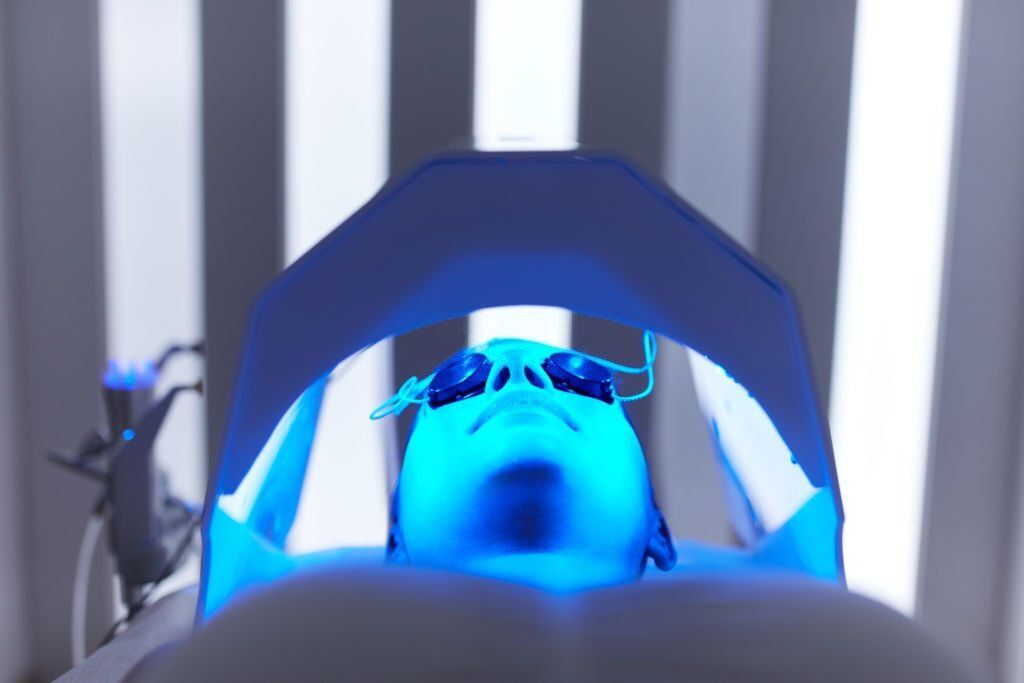This article is reviewed, corrected, and approved by: Julia Weiss CNP| RN | MPH
Blue light therapy is a treatment that helps get rid of acne by attacking the bacteria that cause it and also helps reduce inflammation. Enhancing the appearance of wrinkles and other indications of aging can be further improved with this process.
Some Facts about Blue Light Therapy
The use of blue light therapy is generally considered safe and well-tolerated. However, it is important to follow carefully and handle the provided instructions and avoid direct exposure to light. Especially when someone is doing it at home on their own.
Here are some facts about bluelight therapy you should know
- Blue light therapy devices are available in a variety of sizes and models to treat different areas of the body.
- The length/duration of treatment differs based on the particular medical condition being treated. For example, acne treatment typically requires 10-15 minutes of daily exposure, while sun spots on skin or sun damage may require 20-30 minutes of exposure, and so on.
- Bluelight therapy devices are commonly used in home settings, but they are also applicable in medical facilities.
- Blue light therapy is a new but effective treatment with growing research support.
Pros And Cons Of Blue Light Therapy
Bluelight therapy is a non-invasive way to treat various skin conditions using specific wavelengths of blue light. Here are blue light therapy's benefits and drawbacks to consider before using it.
Blue Light Therapy Benefits
1. Effective for SAD: Treats Seasonal Affective Disorder (SAD) by regulating mood and sleep patterns.
2. Improved Sleep: Regulates circadian rhythm, leading to better sleep quality.
3. Acne Treatment: Targets and eliminates acne-causing bacteria, promoting clearer skin. It helps to reduce wrinkles and crow's feet.
4. Non-Invasive: Compared with surgical or drug-based treatments, blue light therapy is non-invasive and non-toxic.
5. Low Side Effects: Minimal side effects, making it safer for many.
Cons of Blue Light Therapy
1. Skin Sensitivity: Some may experience skin sensitivity or irritation, especially at high intensities.
2. Limited Regulation: Lack of standardized regulations for devices. Increased risk of macular degeneration.
3. Not for All Skin Types: May not suit for all skin types
4. Efficacy Variability: Inconsistent results across trials.
5. Expensive equipment limits accessibility.
Red Light Therapy vs. Blue Light Therapy

Conclusion
Finally, Bluelight therapy is known to reduce various types of scars, whiten teeth, and serve other purposes as well. It has some advantages and drawbacks.
Before therapy, you can speak to a facial therapy specialist or photodynamic therapy specialist to get more information. They can provide you with detailed information about the pros and cons of blue light therapy.
Frequently Asked Questions (FAQs)
Q: What does blue light therapy do?
Ans: Blue light therapy can target skin conditions like acne and psoriasis by eliminating bacteria and reducing inflammation. It may also improve mood, sleep patterns, and signs of aging.
Q: What is the purpose of red and blue light therapy for teeth?
Ans: Red light therapy reduces pain after dental procedures, and blue light therapy whitens teeth by removing stains.
Q: Is it safe to use blue light therapy every day?
Ans: It's better if you don't use it every day. Instead, it's recommended to use it once or twice a week.


